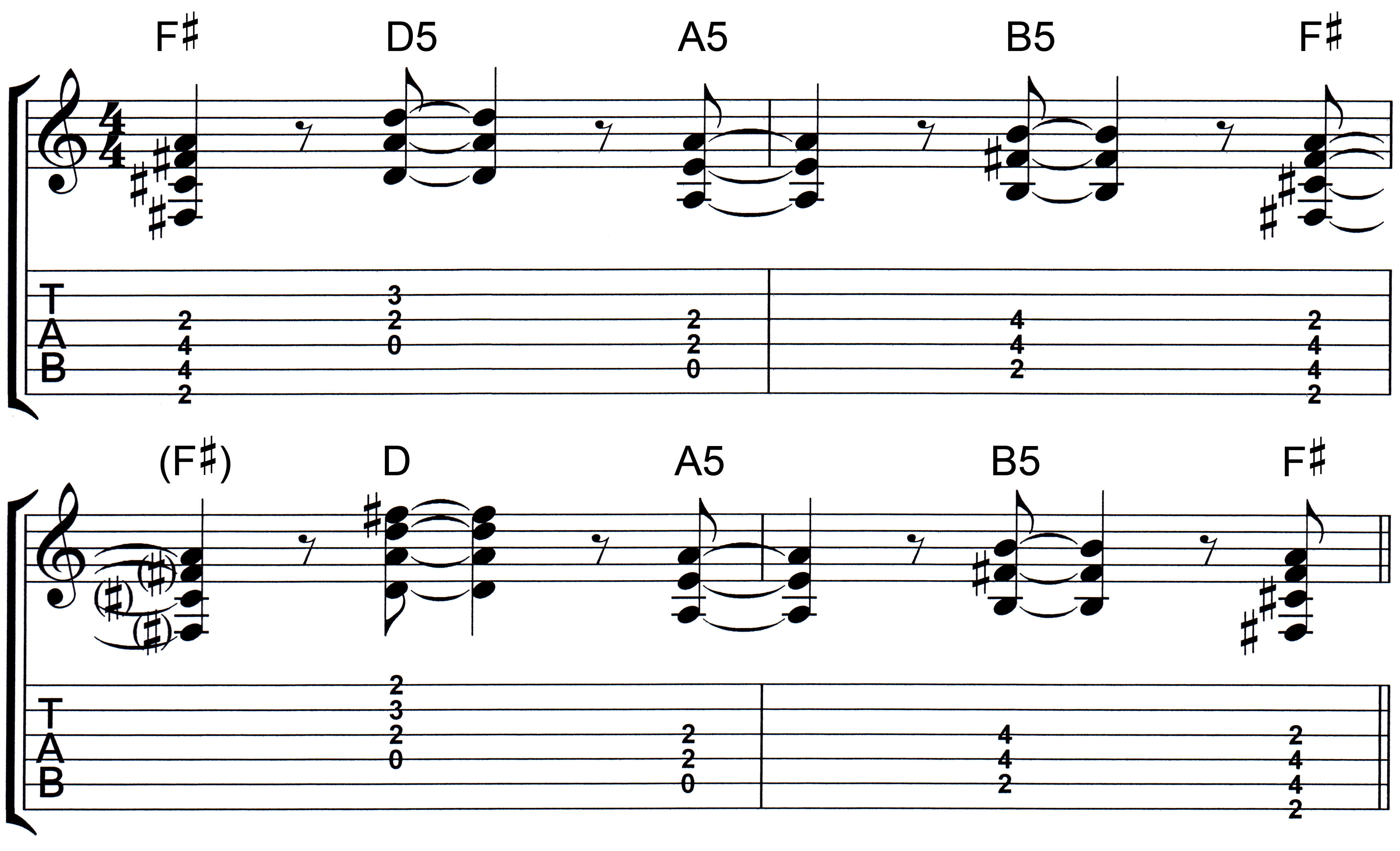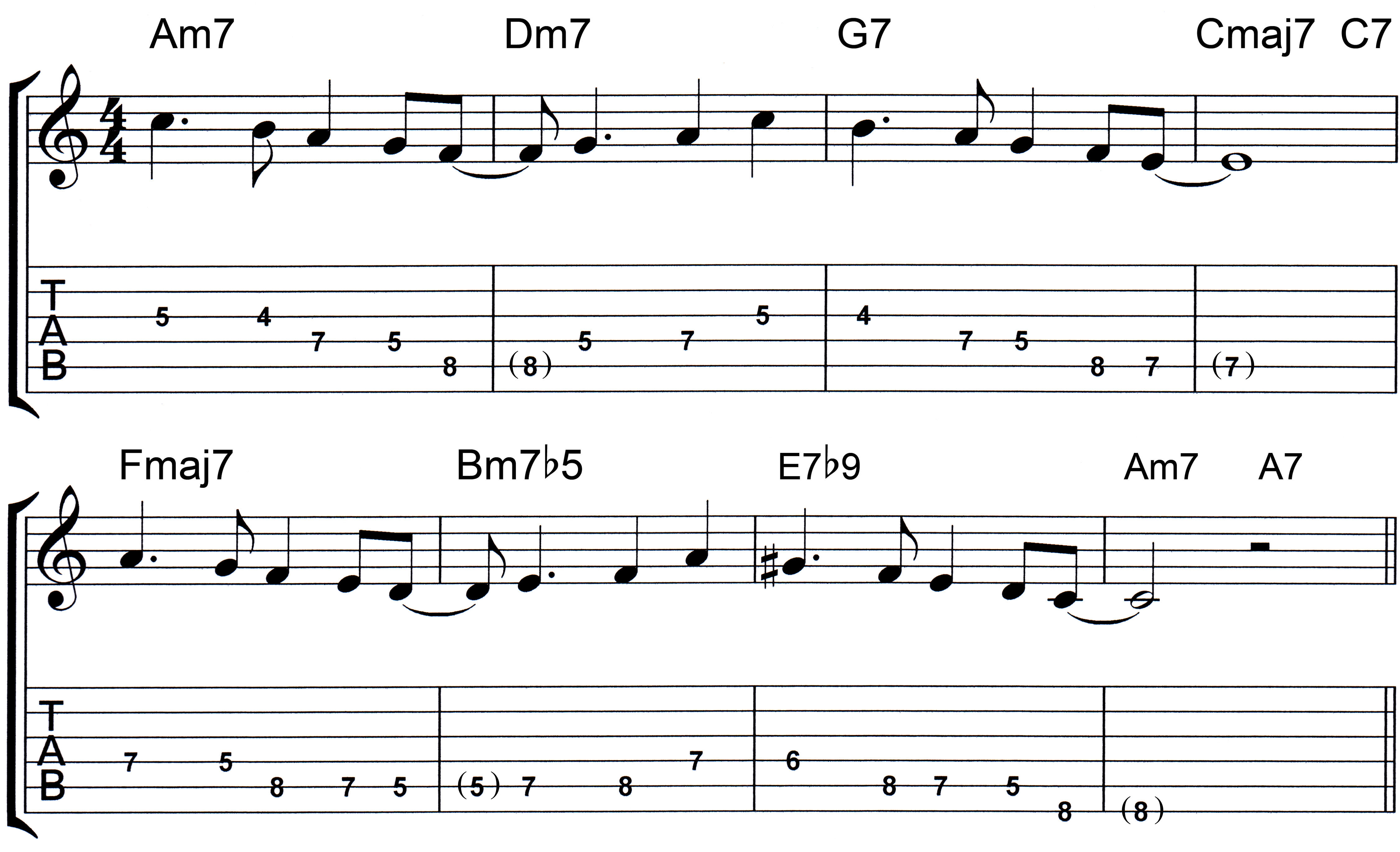
One of the areas many aspiring players struggle with is syncopation and counting. All through this series we have stressed the importance of using a metronome and counting. Why? Well, speaking solely for myself, as a
musician with over 40 years professional experience, and playing music for over 54 years, one thing I still do a lot is count and use a metronome. The reason is simple: to ensure I am playing things correctly, placing
the notes in the right place at the right time, for the right length of time.
So you must understand this: the drummer is not the sole person responsible for keeping the band on beat. They have a responsibility to do their part, but they are not responsible for you staying on beat. You
are. Together, every member contributes to good tempo (or meter), and maintaining good tempo throughout the song!
With that in mind, what follows are some good exercises, taken from actual songs, you can work on to play correctly. The songs shall remain nameless, but you may recognise them as you play the bits.
First up is a wonderful example of playing on the "&" of the beat. Before you play, count it out; note where the rests are - silence is every bit as important as the noise! Then play slowly through the
part - counting out loud. Then put it to a metronome. Increase speed only as you are able to do so while preserving all requirements to make this sound right.

The importance of timing in playing any syncopated part cannot be stressed enough. If you do not learn how to do this well, you will always screw it up. And when you play with other people, don't expect them to just shrug their shoulders and let it go. Perhaps they don't understand it either. But when you do, you can help others to learn how it works. Musicians helping musicians... what a concept!
Okay, the next bit is some single note playing from a well known Jazz tune. Again, count this out before playing. Timing is everything for the melody to work correctly, so you must understand how to play this properly to
maximize the effectiveness of a well executed melody line.

If you do not understand the "push-pull" nature of syncopation in rhythm and in melodies, you will never quite get the "authentic" sound and feel you're going for. This happens a lot in Blues, where players play the right notes in the right places, but just don't get the feel or that authentic "I was weaned on this stuff from the cradle" sound (which isn't really tied to your guitar or gear - just look at some of the gear the great players were using back in the 1950s and you'll see it has less to do with the brand than with the man playing the music).
The only way you will get a grasp on this is to count. I cannot tell you how many times I have to insist my students count - out loud - while they play. Yes, it feels stupid at first. But once I have them do this, and they actually get the notes in the right place, and the "flow" of the part right, they begin to see the value of counting. I've been counting since the first day I started playing music, and I haven't and will not stop until I am done with this world. Ask any professional (among whom I am counted) and we will all tell you the same thing: you have to count it out or you won't get it right. You cannot simply "feel" your way to a correct placement of notes. It doesn't work that way - ever.
Okay, so the best thing you can do here is just learn stuff that employs this syncopation, which requires counting to know correct note placement. Therefore, the following couple of examples are geared to give you more of this to practice.
Next up is a familiar tune from the 1970s, the main intro riff. If you do not count this out, you will never get it right. You can "feel" your way through it, but why bother? Counting syncopated parts gets you there
quicker. Give it a look.

Rhythm parts are not always chord based. The above example is evidence of that. And the next example is back to chords, but using partials. Funk is a heavily syncopated form that requires you to know where the beat is
at all times - particularly the ONE. Screw up anything but the one of the measure, and you're going to be okay - well, that's the joke. The truth is, you need to be critically aware of where you are in the beat count
at all times, otherwise whatever you're trying to play will fall apart. Check this out...

One of the most important aspects of syncopation and counting is this: when playing fast tempo tunes, there is more "forgiveness" in note placements. What I mean is that the placement of the notes is not as critical. When you play an uptempo rock or pop tune, the tempo is running by in such a way that sloppy execution is actually covered up; you can be a bit "off". As long as you're mostly on beat, you're okay.
To make the point, play the following rhythm at about 120 bpm. Then at about 140 bpm.

Pretty straightforward, no problems keeping on beat - at least that's how it sounds because the tempo is fast enough to blur any inaccuracies in your playing.
Now, play this next riff at 60 bpm. Don't cheat, actually play this through.

You really had to think about what you were doing, and it took a moment to get properly aligned with the metronome so you were playing precisely on beat - if you were even able. And that's the point.
That sloppy technique stands out like a sore thumb at slower tempos. You can't hide it. Therefore, practicing materials at a slower tempo is actually more beneficial and useful for perfecting your time keeping and note placement skills - because you have to be more precise in playing notes exactly on the part of the beat in which they occur. Any slop is instantly noticed! This is why I teach my students to play things slower than normal, to have time to think about what they're playing, and to place the notes exactly where they belong, holding them for the duration they are supposed to be held.
When you begin to kick up the tempo - but only by around 4 bpm at a time - your now precise technique will come with you. And once you are up to speed, the part will sound so much better - because notes are being played exactly where they belong, not mostly so. And that means cleaner sounding parts!
Okay, that's it. Now, shut off this computer and go play, teach, gig, create, arrange and enjoy the whole process that is music... and especially guitar!